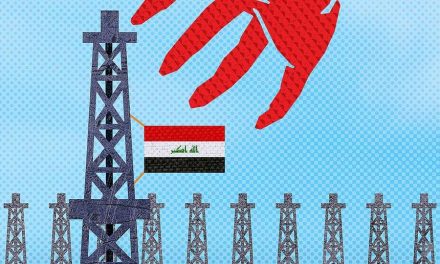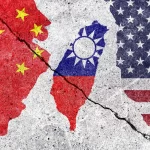By Jianli Yang
 December 10 marked the thirty-second anniversary of the conferment of the Nobel Peace Prize to the Tibetan spiritual leader the Fourteenth Dalai Lama. The conflict between Tibet and communist China has been an international spectacle for decades. Ever since the Dalai Lama fled to India in 1959, disputes over governance, sovereignty, and religious freedom in Tibet have continued to escalate, and remain far from resolved. But while the courageous struggle of the Tibetan people is an ongoing matter of grave concern, there is another issue at hand that also requires urgent attention: the climate crisis in Tibet.
December 10 marked the thirty-second anniversary of the conferment of the Nobel Peace Prize to the Tibetan spiritual leader the Fourteenth Dalai Lama. The conflict between Tibet and communist China has been an international spectacle for decades. Ever since the Dalai Lama fled to India in 1959, disputes over governance, sovereignty, and religious freedom in Tibet have continued to escalate, and remain far from resolved. But while the courageous struggle of the Tibetan people is an ongoing matter of grave concern, there is another issue at hand that also requires urgent attention: the climate crisis in Tibet.
At last month’s United Nations Climate Change Conference (COP26) in Glasgow, there was one notable absentee: the leader of the world’s largest polluting nation, Chinese President Xi Jinping. Understandably, Xi’s absence drew widespread criticism. China is the world’s largest polluting country, and its CO2 emissions continue to rise despite the fact that it has signed several environmental agreements. Tibet, nominally an “autonomous region” but actually controlled by China’s communist government, is of particular concern. The Chinese Communist Party not only governs Tibet but also exploits the region as a dumping ground for toxic waste. And it has failed to provide Tibet with the resources needed to protect its fragile ecosystem and unique biome.
The CCP’s wanton disregard for Tibet is evident from the rapid industrial projects implemented in the region over the past several decades. Even Beijing’s recent white paper on Tibet barely bats an eye when it comes to environmental protection, mentioning only some small-scale projects in a few Tibetan cities. But despite Beijing’s wilful ignorance, overseas Tibetan communities came to the fore during COP26 and voiced their concerns about Tibet’s fragile environment and its importance to the world.
The Significance of Tibet as the World’s “Third Pole”
The Tibetan Plateau is the world’s highest geographic area, with an average altitude of 14,370 feet (4,380 meters). Since its glaciers contain more frozen water than anywhere else in the world except for the Arctic and Antarctic polar caps, Tibet has been dubbed the “Third Pole.” Meltwaters from Tibet’s vast glaciers flow into major rivers throughout Asia and sustain life for almost 2 billion people in countries such as China, India, Pakistan, Vietnam, and Thailand. Tibet is also home to one of the world’s largest areas of permafrost, which stores carbon and prevents it from being released into the atmosphere.
Many important rivers (including the Brahmaputra, Mekong, Yangtze, and Indus) originate from Tibet. These rivers not only provide a water source to the lower riparian regions, but they have also become important transport channels, connecting landlocked Tibet to the oceans of the world. Moreover, these rivers have enabled the regions to which they flow to achieve incredibly high levels of biodiversity. In addition, the Tibetan Plateau has a profound influence on the Asian monsoon, as the towering mountain ranges in and around Tibet deflect the monsoon current throughout the continent.
How the CCP’s Policies Are Destroying Tibet’s Environment
Unfortunately, the above-mentioned systems are now being devastated by the CCP for short-term economic gain, without any consideration for the people of Tibet, China’s long-term future, or neighboring countries that are experiencing “second-hand” climate change and environmental degradation stemming from Beijing’s industrialization policies and projects.
A report released by the International Center for Integrated Mountain Development (ICIMOD) predicts that at least a third of the region could melt due to the climate crisis. According to the report, the carbon emission rate needs to be cut down for this scenario to be averted. Anthropogenic carbon emissions result primarily from fossil fuel mining, deforestation, and emissions from power plants and vehicles.
The monsoon cycle has also been deeply affected by China’s industrial activities, including lithium mining as well as mining for nuclear minerals in Tibet, thereby creating a huge carbon footprint. Although the Montreal Protocol explicitly bans the use of hydrocarbons, Beijing simply ignores it for immediate economic gain. This causes drastic harm to the ozone layer that envelops the Earth’s atmosphere and protects us from harmful UV rays. Excessive industrial mining has not only robbed Tibet of its natural resources, but has also left the land barren and infertile.
International observers have not ignored the CCP’s construction of massive dams. In particular, the Three Gorges Dam, a hydroelectric gravity dam completed in 2008, received international scrutiny primarily due to its negative effects on biodiversity and the involuntary displacement and resettlement of affected communities. Dams in China have also strained the water flow to the country’s downstream regions, creating a water crisis.
China’s restrictions on leading a nomadic lifestyle have also adversely affected Tibetan nomads and their land. The forced resettlement of nomads has left them jobless since they are not accustomed to the life of average job-seekers. The land that they once relied on for farming and livestock grazing does not receive the proper care that it naturally does through nomadic activities.
Conclusion
The Tibetan participants at COP26 did their utmost to raise the issue of Tibet’s dire environmental situation, and many attendees were respectful enough to listen and educate themselves. This included the leaders of several sovereign nations, celebrities who are concerned about environmental protection, and activists who are worried about the precarious state of the environment and the lack of environmental policy enforcement.
His Holiness the Dalai Lama has always emphasized that the Tibetan Plateau needs to be protected, not just for the Tibetan people but for the environmental health of our entire planet. The world’s Third Pole is under threat. On October 31, His Holiness shared a message to the UN’s COP26 Climate Change Conference, in which he stated that it is our collective responsibility to protect the earth from the urgent threats of global warming and climate change. He noted that Tibet is “the source of some of the world’s major rivers,” and that the rivers of Tibet act as “a source of life since they provide water for drinking, irrigation for agriculture, and hydropower for nearly two billion people across Asia.” The Dalai Lama also cited the melting of Tibet’s glaciers, widespread deforestation, and the damming of rivers as factors contributing to Tibet’s climate crisis. His message was an attempt to alert the world to the grave consequences of the CCP’s gross environmental negligence. He emphasized that it is up to us to correct our past wrongdoings toward nature and praised the younger generation, including young activists like Greta Thunberg, for taking a bold stance on environmental issues and demanding action on climate change. He ended his statement with a plea for mankind to unite in solidarity and work together to address the climate emergency that we all face. “We have to act to make this a safer, greener, happier world,” the Dalai Lama concluded.
Tibet is an example for the world to witness and hopefully stand up for. The climate crisis in Tibet is a matter in need of immediate attention and, more importantly, immediate action.
However, Tibet’s environment can only be saved if the CCP reverses course on its callous industrialization policies in the region. The Chinese government’s failure to attend COP26 casts serious doubt on whether the regime cares about environmental protection. Even the CCP’s recently published “Resolution on Certain Questions in the History of Our Party,” a 14-page-long document, contains only a few sentences about the environment. From all appearances, Beijing is unwilling to take meaningful steps toward environmental preservation and protection.
Although China has pledged that it will achieve carbon neutrality by 2060 (a decade after the deadline set by the Paris Agreement), the CCP is now planning to set up carbon dumping zones in Tibet so that it can fulfill this postponed target. Tibet, with its environment already severely damaged as the result of CCP-led industrialization projects, is now under further threat from the Chinese regime. If this trend continues, Tibet will be far from the “safe haven” portrayed in the science fiction film 2012. Instead, Tibet could turn into a desolate wasteland due to Beijing’s myopic focus on near-term economic gains. It is time for the CCP to think about the future—and stop degrading the environment while there is still time and hope.
This article first appeared in Providence on December 28, 2021























